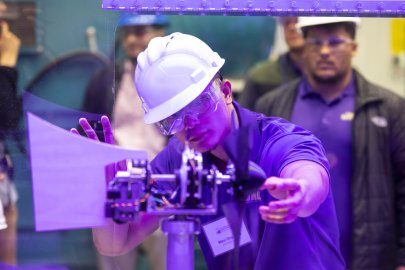As wind generation increases, cybersecurity efforts will add resilience to critical infrastructure.
Wind Energy Technologies Office
June 1, 2020As wind generation increases, cybersecurity efforts will add resilience to critical infrastructure
More than 50,000 wind turbines with a combined capacity of about 100 gigawatts operate in the United States, providing more than 7% of the nation’s electricity in 2019. However, the current state of cybersecurity readiness at U.S. wind power plants is generally behind in comparison to other types of large-scale power generation, such as coal and nuclear power plants.
This article is part of the
To increase the resilience of critical wind infrastructure in the United States, researchers at DOE’s Idaho National Laboratory (INL) are leading several research efforts funded by WETO.
The collaboration among industry and researchers from four DOE National Laboratories—INL, NREL, Sandia, and Pacific Northwest National Laboratory (PNNL)—also seeks to explore how wind energy could reliably and resiliently contribute to military and disaster-relief applications.
“As wind generation in the United States continues to grow, it becomes more of a critical generating asset of our bulk electric system,” said Jake Gentle, a senior power systems engineer at INL. “This is why protecting U.S. wind infrastructure from cyberattacks is so important to safeguarding our entire electric system.”
Cybersecurity researchers have shown that individual turbines are vulnerable to physical and electronic attacks that could disable or damage turbines or an entire wind plant. A wind turbine hacked on the ground or through the internet could serve as an access point for cybercriminals to attack large-scale electricity infrastructure.
In 2019, researchers at the four participating National Laboratories kicked off five related research projects that will make wind energy more secure now and in the future:
- WETO’s Roadmap for Wind Cybersecurity. This project lays out a strategy that DOE will use to guide future R&D funding in partnership with industry, outlining strategic priorities based on the National Institute of Standards and Technology’s cybersecurity framework. The project team is also developing a proof-of-concept prototype for tactical military applications.
- Microgrids, Infrastructure Resilience, and Advanced Controls Launchpad (MIRACL). The MIRACL project looks at securing distributed wind facilities, such as defense applications, rural communities, university campuses, and hospitals. The project focuses on wind infrastructure control systems and wind generation in the context of microgrids and hybrid distributed energy systems.
- Defense and Disaster Deployable Wind Turbine (D3T). D3T could provide deployable energy in a secure system for military applications and disaster relief in conjunction with solar, storage, and other sources of energy.
- Hardening Wind Energy Systems from Cyberthreats. This project helps secure wind energy technologies by protecting wind communication networks and constructing intrusion-detection systems. These techniques will be shared broadly with the wind industry to defend communication systems from cyberattacks and detect when these attacks occur.
- Deployable Advanced Renewable Power System (DARPS). DARPS is a deployable 31-kilowatt wind/battery hybrid system that can be quickly installed without additional equipment or infrastructure. DARPS will have microgrid capabilities so it can operate in grid-connected or isolated off-grid modes.
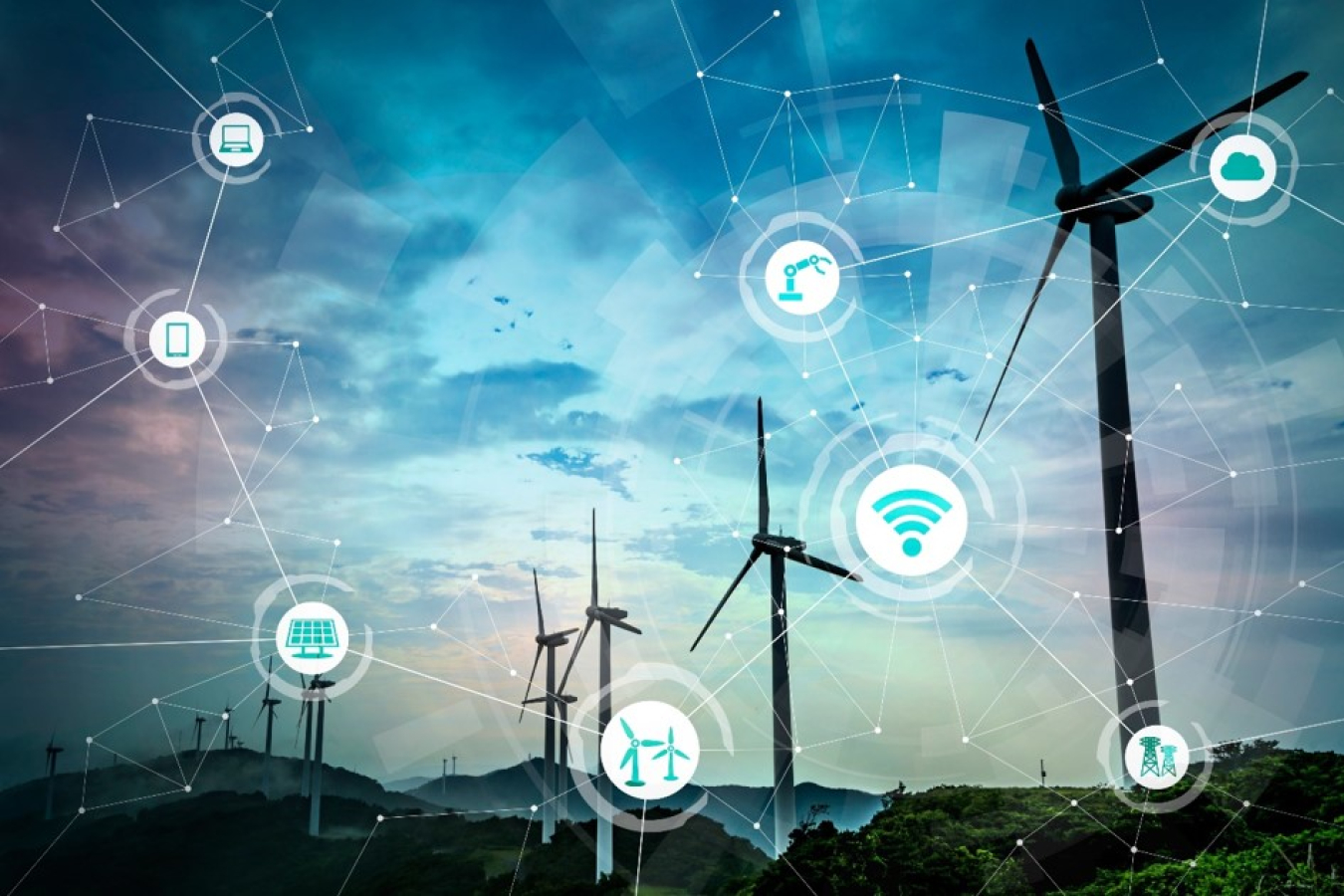
A wind turbine hacked on the ground or through the internet could serve as an access point for cybercriminals to attack large-scale electricity infrastructure. Graphic: Jake Gentle, INL
“Renewable energy sources, including wind technology, are poised to alter the generation makeup of the electric grid in the future,” said Sarah Freeman, an industrial control system cybersecurity analyst at INL. “This shift, however, requires that these resources remain resilient in the face of cyberattacks. This work aims to ensure the reliability of wind generation.”
Together, these projects will allow National Laboratories and industry to conduct R&D and implement technologies in a way that makes wind energy more secure.
Spring 2020 R&D Newsletter
-
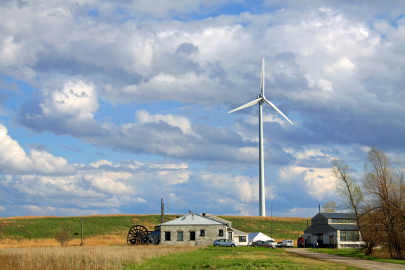 International team examines solutions to make wind systems competitive in the distributed energy market.
International team examines solutions to make wind systems competitive in the distributed energy market. -
 In some markets, wind power is having significant impacts on the timing and location of electricity prices.
In some markets, wind power is having significant impacts on the timing and location of electricity prices. -
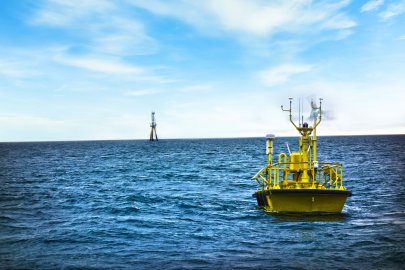 $1.3-million upgrade extends lidar reach and data recovery rate; provides more accessible information.
$1.3-million upgrade extends lidar reach and data recovery rate; provides more accessible information. -
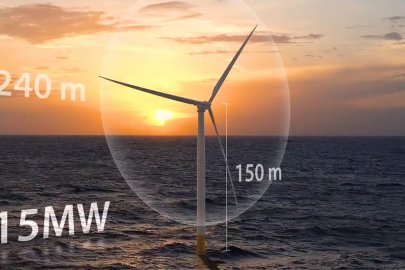 Multimegawatt reference turbine expands capabilities to assess technology for ever-larger and lower-cost designs.
Multimegawatt reference turbine expands capabilities to assess technology for ever-larger and lower-cost designs. -
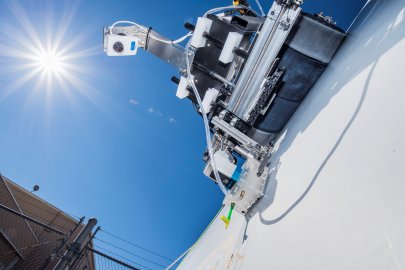 Sandia National Laboratories’ ARROW(e) system brings automated, high-tech wind blade inspections to the field.
Sandia National Laboratories’ ARROW(e) system brings automated, high-tech wind blade inspections to the field. -
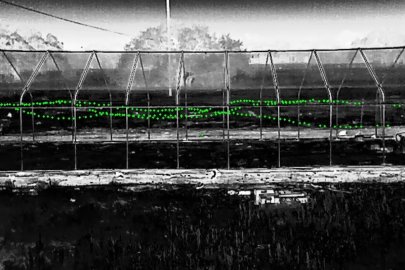 Flight-path monitoring aims to determine the effectiveness of ultrasonic acoustic deterrents.
Flight-path monitoring aims to determine the effectiveness of ultrasonic acoustic deterrents. -
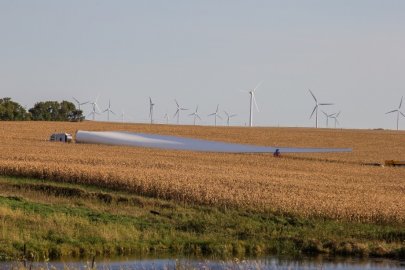 Study blows a hole in the theory that wind turbine manufacturers have avoided carbon fiber materials because of their high cost.
Study blows a hole in the theory that wind turbine manufacturers have avoided carbon fiber materials because of their high cost.
Explore previous editions of the Wind R&D Newsletter or browse articles by topic:


